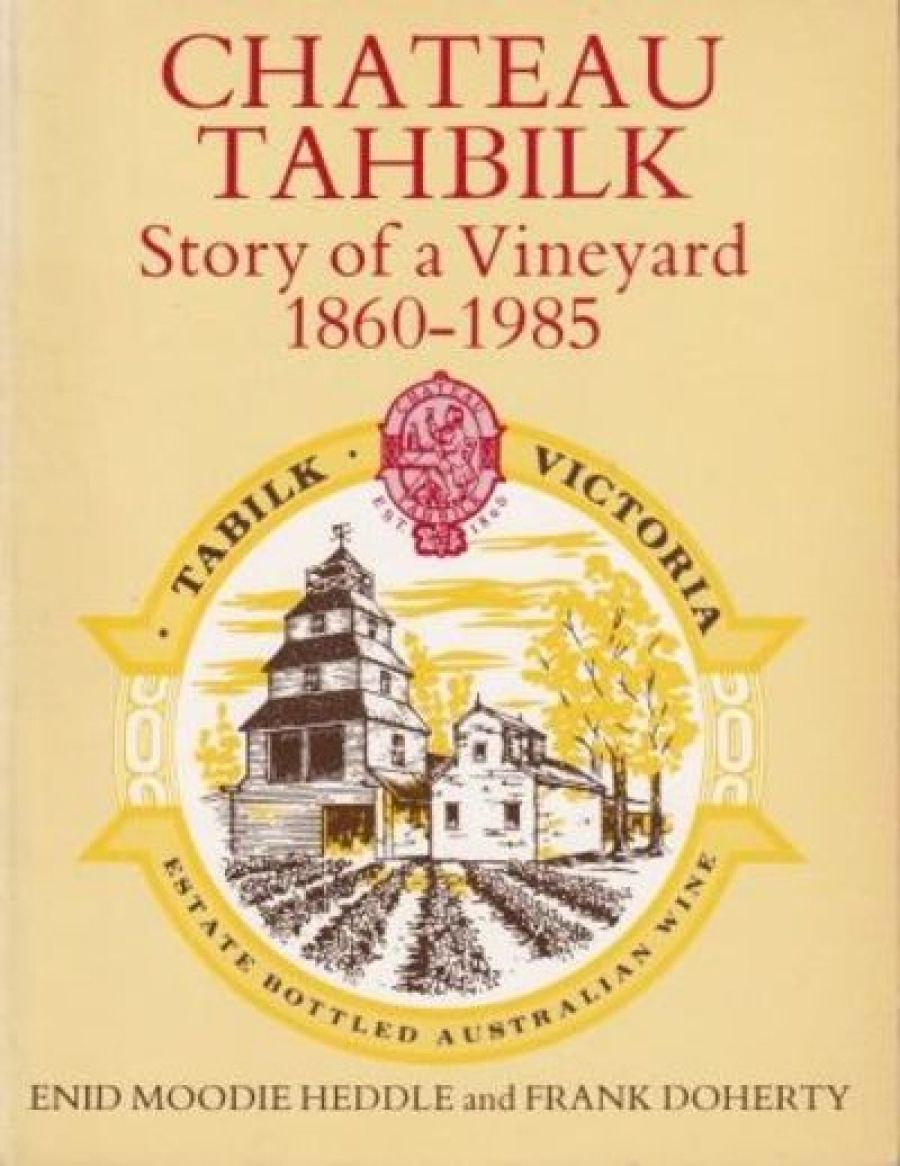
- Free Article: No
- Contents Category: Australian History
- Review Article: Yes
- Article Title: Grape History
- Article Subtitle: The Europeanisation of plonk
- Online Only: No
- Custom Highlight Text:
This is a book in two parts, the first written by historian Enid Moodie Heddie and published by Cheshire in 1960, and the second part written by well-known Melbourne writer on wine Frank Doherty, the two sections being joined for publication as one volume in l985.
- Book 1 Title: Chateau Tahbilk
- Book 1 Subtitle: Story of a vineyard 1860–1985
- Book 1 Biblio: Thomas C. Lothian, 89p., illus., $8.95 pb, $14.95hb
Enid Moodie Heddie begins by outlining the history from the first settlement by Europeans in the area, a temporary Protectorate for Aborigines in 1839. The Tabilk [sic] lands were leased first in 1852 by John Purcell and Hugh Glass. Later, in 1856, Glass purchased a 640-acre lot of the Tabilk lands, and in 1860 the Tabilk Vineyard Proprietary, owned largely by John Pinney Bear, purchased the property from Glass, and planted vines there. Bear eventually became sole owner. The Bears retained ownership until the property was sold to Reginald Purbrick M.P. following the death of Mrs Bear in England in 1925.
The vineyard was in the doldrums and from 1931, Eric Purbrick, Reginald’s son, set about with the advice of François de Castella the Government Viticulturalist (a post which sadly, does not exist today at the height of the renaissance of Victoria as a producer of fine wines) to rehabilitate the fortunes of the vineyard and winery.
Enid Moodie Heddie covers the first hundred years with ample reference to general historical detail, as well as that directly involved with Chateau Tahbilk, and with an obvious affection for the subject. Her section is an interesting and worthwhile history of an individual winery, and at the same time of the colony, and later State, of Victoria.
The period immediately following 1960 was that in which Australians became interested once again in table wines largely through the influence of European migrants. Doherty covers this important phase and its effect on Tahbilk; and, in the rest of his thirtyodd pages, concentrates on the development and modernising of the winery and the fortunes of the Purbrick family, father, son and grandsons – grandson Alister being the first qualified wine-maker in Tahbilk’s history.
The monochrome drawings by Harold Freedman are beautifully done and an excellent complement to the text.
This is an unusual way to update a history, but it has worked well, and will be a valuable addition to the literature about the story of wine in Australia.


Comments powered by CComment